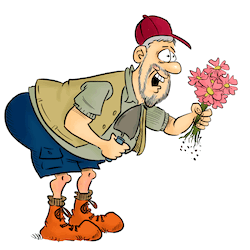Guest Blogger FatGardener
There are many plants that are wildlife-friendly and can attract a variety of birds, insects, and other creatures to your garden as well as enhance its intrinsic beauty.
Here are my top ten for the birds and bees but our enjoyment of their beauty too:
Lavender – This fragrant plant is known as a major attractor of bees and butterflies to your garden. Moreover, it is versatile as individual plants or a low hedge that releases its fragrance as you brush against it. In these times of climate change its an all-weather wonder that is drought resistant.
Buddleia – Also known as the butterfly bush, this plant produces large clusters of flowers that attract a wide variety of butterflies and other insects. It can grow practically anywhere and thrives on neglect.
Honeysuckle – The sweet scent of honeysuckle is attractive to bees and other insects because it is rich in nectar. It is usually grown as a climber but will work as a standard bush too. Essential in every garden for its enticing aroma. There are evergreen species for year-round interest. The fruit are also eaten by birds.
Foxgloves – These tall flowers are great for attracting bees and particular bumblebees that crawl deep inside the flowers. Cultivated varieties are available in white and peach colours as well as the wild pink of woodland glades.
Echinacea – Also known as coneflower, with large round spikey flowerheads, it is popular with many insects including bees and butterflies.
Sunflowers – Sunflowers can attract a variety of birds, such as finches, who love to feed on the seeds. The flowers are huge and beloved by many pollinators too. Leave the seedheads standing overwinter for the birds to find.
Black-eyed Susan – This North American native wildflower is great for attracting butterflies and bees wherever it is grown.
Holly – Holly bushes can provide food for a variety of birds, from Autumn or overwintering Blackcaps to winter thrushes such as Redwings and Fieldfares. The prickly leaves can deter predators so they also provide cover for roosts and nests.
Ivy – Ivy provides excellent shelter for small animals such as hedgehogs and birds. It is vastly underated by gardeners who often see it as a menace as it climbs their prize trees. However, it sustains many invertebrates with its flowers attracting bees and wasps and other pollinators in late summer and its berries sustain birds from migrating Lesser Whitethroats in Autumn to Winter Wood Pigeons.
Snowdrops – These early spring bulbs are a great source of nectar for bees emerging from hibernation, when there are few other sources. Of course, they bring hope of things to come from us gardeners too.
Keep in mind that planting a variety of plants with different flowering months can give sustenance throughout the year. Flowers, shrubs and larger bushes and trees can help create a diverse habitat too, that will attract a wide variety of wildlife to your garden.
